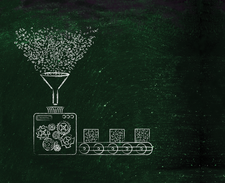Scraping the web for data
Data Harvesting

© Lead Image © faithie, 123RF.com
Web scraping lets you automatically download and extract data from websites to build your own database. With a simple scraping script, you can harvest information from the web.
If you are looking to collect data from the Internet for a personal database, your first stop is often a Google search. However, a search for mortgage rates can (in theory) return dozens of pages full of relevant images and data, as well as a lot of irrelevant content. You could visit every web page pulled up by your search and cut and paste the relevant data into your database. Or you could use a web scraper to automatically download and extract raw data from the web pages and reformat it into a table, graph, or spreadsheet on your computer.
Not just big data professionals, but also small business owners, teachers, students, shoppers, or just curious people can use web scraping to do all manner of tasks from researching a PhD thesis to creating a database of local doctors to comparing prices for online shopping. Unless you need to do really complicated stuff with super-optimized performance, web scraping is relatively easy. In this article, I'll show you how web scraping works with some practical examples that use the open source tool Beautiful Soup.
Caveats
Web scraping does have its limits. First, you have to start off with a well-crafted search engine query; web scraping can't replace the initial search. To protect their business and observe legal constraints, search engines deploy anti-scraping features; overcoming them is not worth the time of the occasional web scraper. Instead, Web scraping shines (and is irreplaceable) after you have completed your web search.
[...]
Buy this article as PDF
(incl. VAT)
